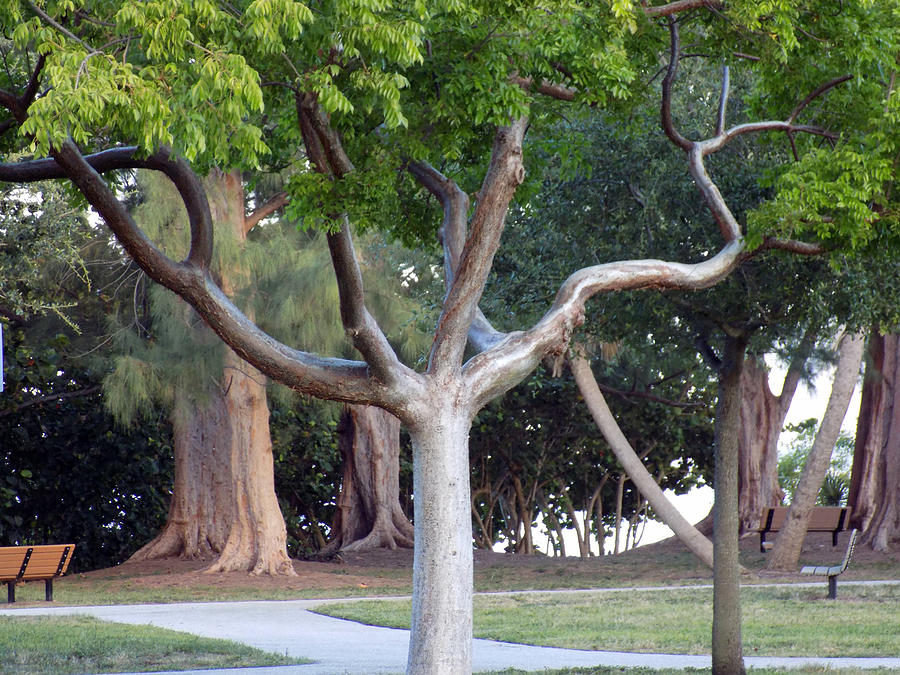
If you cut a tree.the roots sprout young ones.Īny plant that closes at night, especially to the touch (Mimosa pudica, or "12 o'clock" here in Belize), are good for sleep issues or sedation. You can cut a tree and use it as a post and it will regenerate much like the Madre Cacao. You can stick a piece of it in the ground and it grows instantly into a new tree so humans plant it everywhere as fence posts and there it thrives. Chacá on the other hand is virtually immortal. As an added bonus Chechem dies easily from even being too close to the fires of milpas. And at this point, his good brother Chacá who was still a God, VOLUNTEERED to be turned into a tree so he could help heal all the people Chechem was harming.
#GUMBO LIMBO TREE HOW TO#
But even as a tree Chechem figured out how to keep harming people by turning his sap into poison. But eventually the bad one was so bad that he was turned into a tree so that he could do humans no more harm. There is a slightly different version of this Mayan legend, and it goes like this: Yes there were two brother gods. They both watch over Nicte-Ha who was reborn as a beautiful white flower. The loving brother, Kinich, was reborn as the Chaca tree, which neutralizes the venom of the Chechen. The gods granted their wish and the brother Tizic was reborn as the Chechen Tree which burns and blisters anyone who touches it. In the afterlife, they begged for forgiveness and asked to return to the world of the living to see Nicte-Ha again. Eventually the brothers both died in each other’s arms.

T hey declared a battle to the death to determine who would have her.Ī terrible battle raged on, the moon hid, and black clouds filled the skies as the earth was torn apart and the heavens went into hiding. Both fell in love with the same maiden, the beautiful Nicte-Ha. One, Kinich, was kind and loving while his older brother, Tizic, was hateful and angry. So why do these trees always grow near each other? According to the Maya legend, two great warriors were brothers, but of entirely different personalities. It is the most effective antidote to the poison ivy (che chem). If you are in the jungle and come across poison ivy, look around there will be a gumbolimbo tree nearby. I'm sure that in some era of this tree's history, this tree survived and adapted to very dry conditions. And this helps it especially in the dry season when the tree drops its leaves but the plant can continue to photosynthesize. It likely makes photosynthesis through the bark - giving it an extra edge in competition on young stage. And the leaves make a nice cleansing tea. While the peels have medicinal value its actually the bark under, the actual bark, that has the sap. So they put odors we like on their flowers, and colors we associate with food on their fruits, and labels we can understand on their medicine. And many scientists do not believe that plants talk to us in this way, but why not? Plants advertise their fruits and flowers with colors and odors that we understand, so why not their medicine? And if they succeed in communicating their medicinal value to humans, we save them and treat them better and improve their rate of survival. You chip off pieces of bark and soak it in water and use the water to wash with. The peeling bark of this gumbo limbo tells us this plant is medicinal for our skin.

The bark is said to alleviate the rash caused by poisonwood. In Central America, Gumbo Limbo grows in the same (generally) dry forest habitat as black poisonwood and is often found very near that irritating tree.

In Florida, at the northern end of its range, its soft timber was carved into carousel horses before plastic molds were invented. Like copal, gumbo limbo produces a resin, which is dried and burned as incense in parts of South America. Both trees belong to the Burseraceae family. The leaves and fruits have a turpentine-like odor similar to copal. The smooth, red and peeling outer layer has led to its local name of tourist tree for its resemblance to a sunburned tourist. The most distinctive feature of this tree is its bark.


 0 kommentar(er)
0 kommentar(er)
